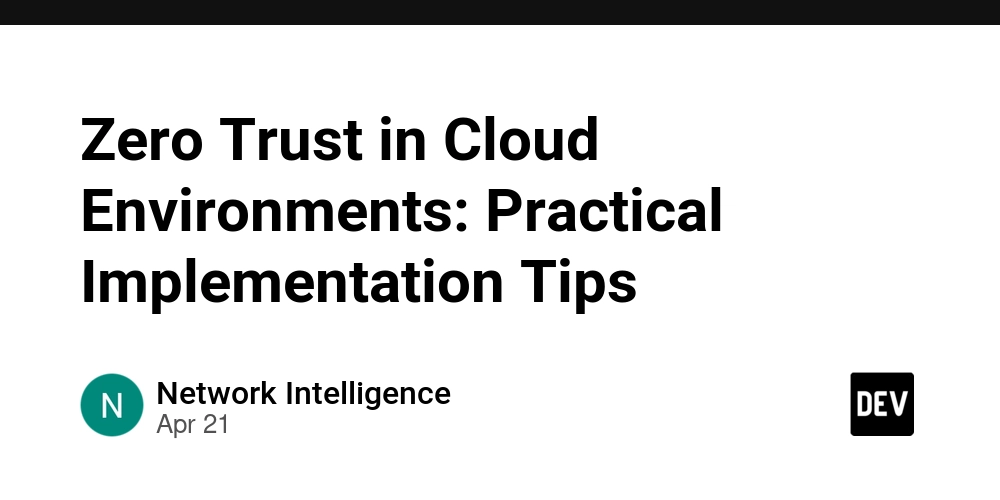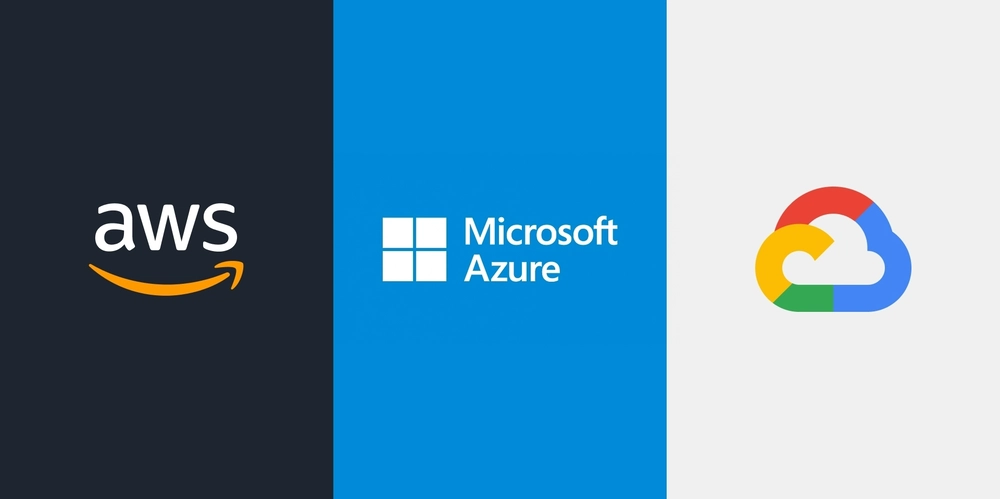Zero Trust in Cloud Environments: Practical Implementation Tips
Intro: As organizations migrate more services to the cloud, adopting a Zero Trust (ZT) model is essential to secure cloud environments. Zero Trust assumes that no user or device is trustworthy by default, even if they are within the corporate network. This approach is especially vital in cloud environments, where traditional perimeter-based security models are ineffective. The Core of Zero Trust in Cloud Setups Zero Trust in the cloud involves verifying every request and ensuring that access is only granted based on strict identity verification and continuous monitoring. The key components of Zero Trust include: • Identity and Access Management (IAM): IAM plays a central role in Zero Trust by ensuring that only authenticated and authorized users can access resources. • Least Privilege Access: Users are granted the minimum level of access necessary for their tasks, minimizing the potential attack surface. Identity-First Security and Segmentation Zero Trust focuses on identity-first security, ensuring that users and devices are verified before being granted access. This can be achieved through multi-factor authentication (MFA), single sign-on (SSO), and secure identity management solutions. Additionally, micro-segmentation ensures that even if one area is compromised, other parts of the system remain protected. Toolkits and Platforms to Get Started Organizations can leverage a variety of Zero Trust tools, including identity management platforms, access control systems, and threat detection solutions. These tools help organizations implement ZT principles across their cloud infrastructure. How Network Intelligence Enables Zero Trust for Cloud Network Intelligence’s Zero Trust services offer comprehensive solutions to help organizations implement Zero Trust architecture in their cloud environments. With expert guidance and AI-powered tools, we help businesses secure cloud access, maintain strict access controls, and monitor for suspicious activity. Conclusion: Implementing Zero Trust is crucial for protecting cloud environments from unauthorized access. Network Intelligence’s Zero Trust solutions offer robust security measures to ensure that your cloud infrastructure remains protected against evolving threats.

Intro:
As organizations migrate more services to the cloud, adopting a Zero Trust (ZT) model is essential to secure cloud environments. Zero Trust assumes that no user or device is trustworthy by default, even if they are within the corporate network. This approach is especially vital in cloud environments, where traditional perimeter-based security models are ineffective.
The Core of Zero Trust in Cloud Setups
Zero Trust in the cloud involves verifying every request and ensuring that access is only granted based on strict identity verification and continuous monitoring. The key components of Zero Trust include:
• Identity and Access Management (IAM): IAM plays a central role in Zero Trust by ensuring that only authenticated and authorized users can access resources.
• Least Privilege Access: Users are granted the minimum level of access necessary for their tasks, minimizing the potential attack surface.
Identity-First Security and Segmentation
Zero Trust focuses on identity-first security, ensuring that users and devices are verified before being granted access. This can be achieved through multi-factor authentication (MFA), single sign-on (SSO), and secure identity management solutions. Additionally, micro-segmentation ensures that even if one area is compromised, other parts of the system remain protected.
Toolkits and Platforms to Get Started
Organizations can leverage a variety of Zero Trust tools, including identity management platforms, access control systems, and threat detection solutions. These tools help organizations implement ZT principles across their cloud infrastructure.
How Network Intelligence Enables Zero Trust for Cloud
Network Intelligence’s Zero Trust services offer comprehensive solutions to help organizations implement Zero Trust architecture in their cloud environments. With expert guidance and AI-powered tools, we help businesses secure cloud access, maintain strict access controls, and monitor for suspicious activity.
Conclusion:
Implementing Zero Trust is crucial for protecting cloud environments from unauthorized access. Network Intelligence’s Zero Trust solutions offer robust security measures to ensure that your cloud infrastructure remains protected against evolving threats.







































































































































































![[The AI Show Episode 144]: ChatGPT’s New Memory, Shopify CEO’s Leaked “AI First” Memo, Google Cloud Next Releases, o3 and o4-mini Coming Soon & Llama 4’s Rocky Launch](https://www.marketingaiinstitute.com/hubfs/ep%20144%20cover.png)

































































































































![[DEALS] The All-in-One Microsoft Office Pro 2019 for Windows: Lifetime License + Windows 11 Pro Bundle (89% off) & Other Deals Up To 98% Off](https://www.javacodegeeks.com/wp-content/uploads/2012/12/jcg-logo.jpg)















































































































































_Andreas_Prott_Alamy.jpg?width=1280&auto=webp&quality=80&disable=upscale#)





































































































![What features do you get with Gemini Advanced? [April 2025]](https://i0.wp.com/9to5google.com/wp-content/uploads/sites/4/2024/02/gemini-advanced-cover.jpg?resize=1200%2C628&quality=82&strip=all&ssl=1)











![Apple Shares Official Trailer for 'Long Way Home' Starring Ewan McGregor and Charley Boorman [Video]](https://www.iclarified.com/images/news/97069/97069/97069-640.jpg)
![Apple Watch Series 10 Back On Sale for $299! [Lowest Price Ever]](https://www.iclarified.com/images/news/96657/96657/96657-640.jpg)
![EU Postpones Apple App Store Fines Amid Tariff Negotiations [Report]](https://www.iclarified.com/images/news/97068/97068/97068-640.jpg)



























![Mobile Legends: Bang Bang [MLBB] Free Redeem Codes April 2025](https://www.talkandroid.com/wp-content/uploads/2024/07/Screenshot_20240704-093036_Mobile-Legends-Bang-Bang.jpg)




































































































